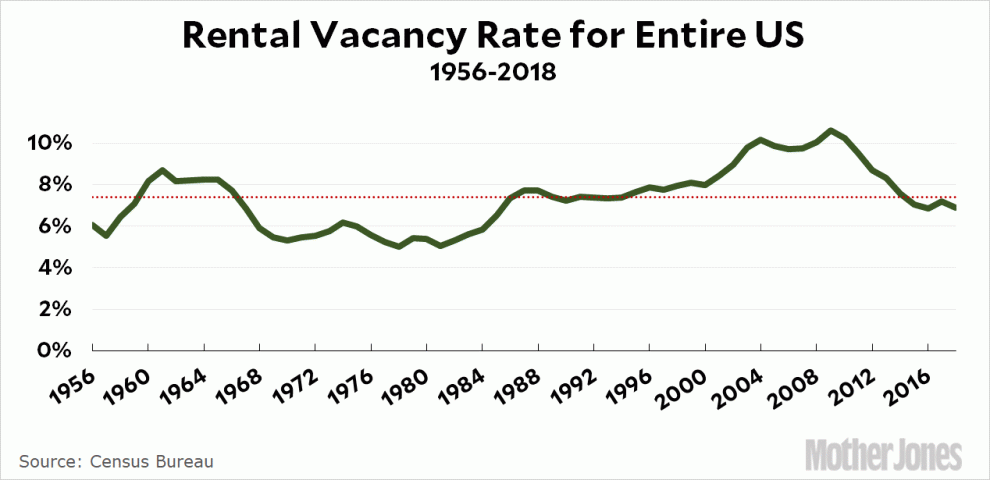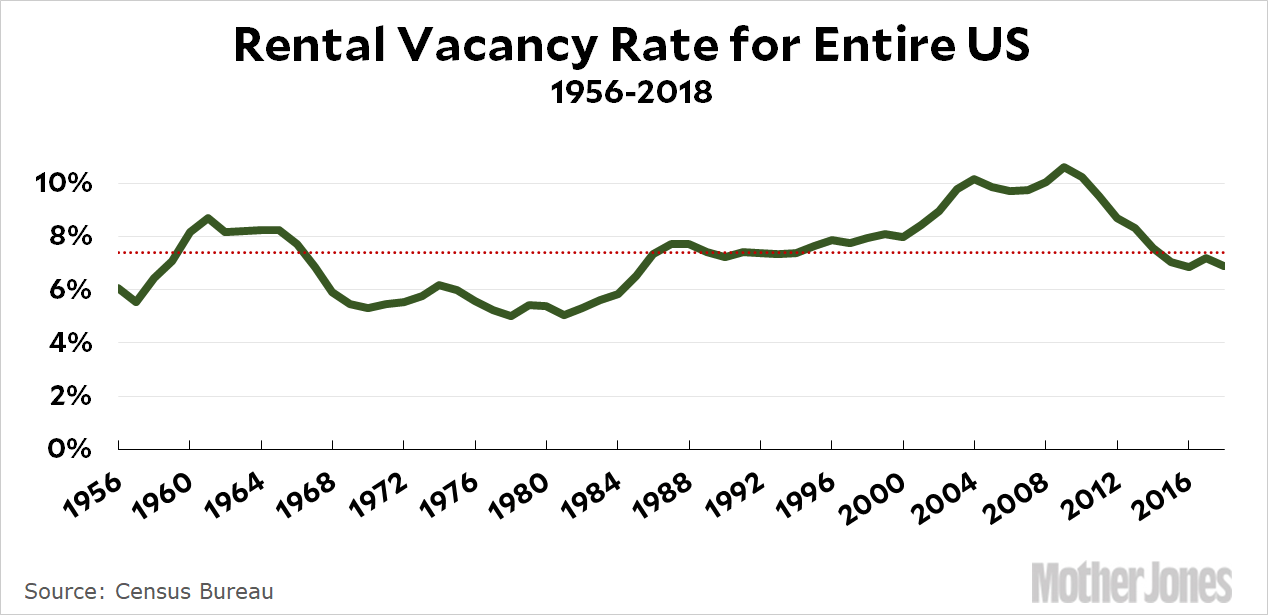
This is, once again, only national data, but it still provides a useful big picture view of what the rental market looks like. When the rental vacancy rate is low, it means the market is tight and rents are likely to increase. Here’s the national vacancy rate for as long as we have data for:

The rental market was noticeably loose during the aughts and then tightened during the Great Recession. But it’s not unusually tight right now. In fact, it’s right at its average for the past 60 years.
This doesn’t tell you anything about, say, the Bay Area or New York City. However, it does tell you that, overall, the market right now is fairly normal. There doesn’t really seem to be any big immediate need for a national program to boost housing.















